#harore
Photo

写真をきちんと撮れなかったのと、文章がとても良かったので、さとこさんの投稿をリポストします。今日から展示なので良かったら見に来てみてください。 #Repost @tarana26 with @use.repost ・・・ 覚王山アパートの 針金ときのこと 豆展 2022/12/03〜12/19 名古屋造形大学 アートストリート内同窓生サロン 今日から始まります! 覚王山アパートの造形の先輩 合田さん @yaouo と よこさん @mame2market と3人展 わたしは今の作品と造形生だった頃の作品を組み合わせた作品を展示してきました! 小牧キャンパスの頃の写真も少し 懐かしい顔が見れるかも⁉️ 20年前のわたしもいます🤭 覚王山アパートでそれぞれものづくりをしているけど 同じ空間に3人で並べたのははじめて なんだかとっても楽しい感じになりました✨ そして同じく同窓生のサロンスタッフのみなさんに搬入いっぱい手伝ってもらって感謝です!年代は違えどみんな元造形生!空気感が似てて楽しい😆 期間中よろしくお願いします💕 1Fアートストリートは一般の方も入れるのでぜひ一度足を運んで見てください ピカピカの新キャンパス素敵ですよ✨✨✨ *ギャラリー内へは金土日月のみ入れます (火水木はガラス越し) *12/17は入試のため学内入れません *最終日12/19は15時まで @nzu_koho @kzapt #名古屋造形大学 #名古屋造形大学同窓生サロン #nzu #覚王山アパート #きのこ雑貨 #HARORE #いつまでも手芸部豆豆 #針金細工八百魚 #kakuozan #Nagoya #craft #artworks https://www.instagram.com/p/Clr-hy1ve8z/?igshid=NGJjMDIxMWI=
#repost#名古屋造形大学#名古屋造形大学同窓生サロン#nzu#覚王山アパート#きのこ雑貨#harore#いつまでも手芸部豆豆#針金細工八百魚#kakuozan#nagoya#craft#artworks
0 notes
Text

i've been so busy and/or uninspired these past few.... years that i haven't really drawn basically anything so fuck it i'm doing a 1 horse per day challenge where no matter what happens i have to draw a horse. even if it's not coloured or anything it has to at least exist. so here's day 1 with a rly quick rainbow dash drawn in flipaclip w my finger
#mlp#my little pony#fanart#rainbow dash#rd#also i finally found an art name that i like. it's harore (mushroom in te reo māori) + róka (fox in h/ungarian)#i wanted smtg that has something i like but is smtg that's unique and yknow. searchable#also apparently it's some kinda tree (???) in malay????#but nothing too obvious so. yeah#1 horse per day
10 notes
·
View notes
Text
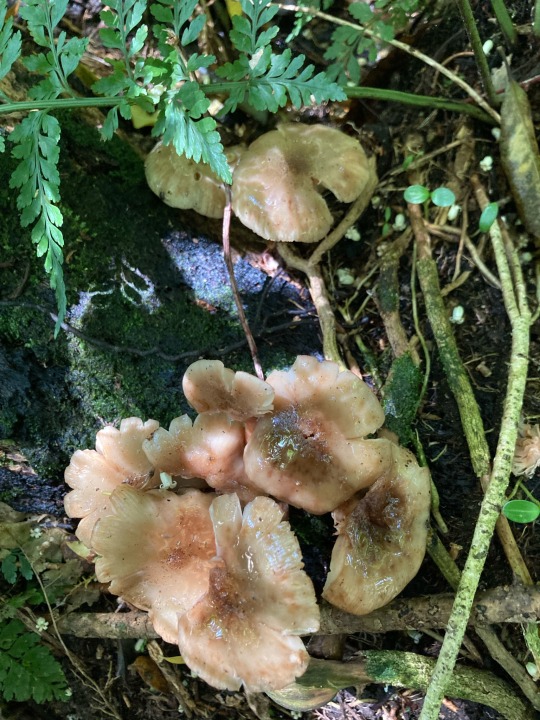
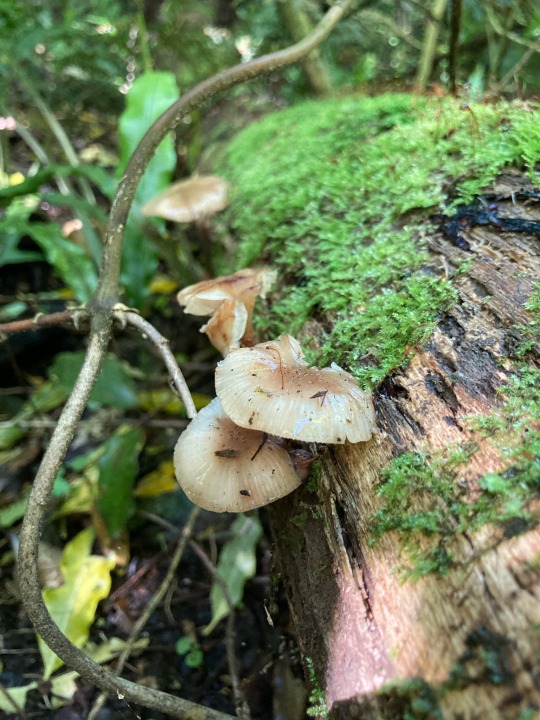
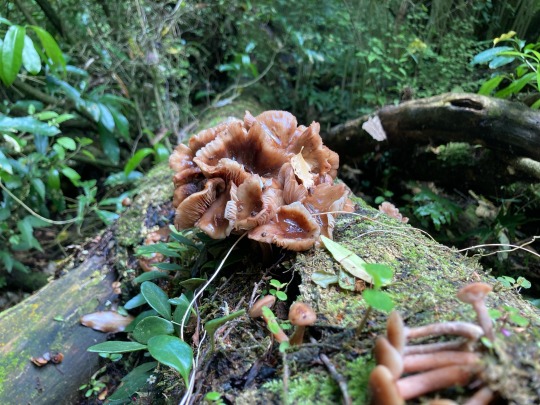

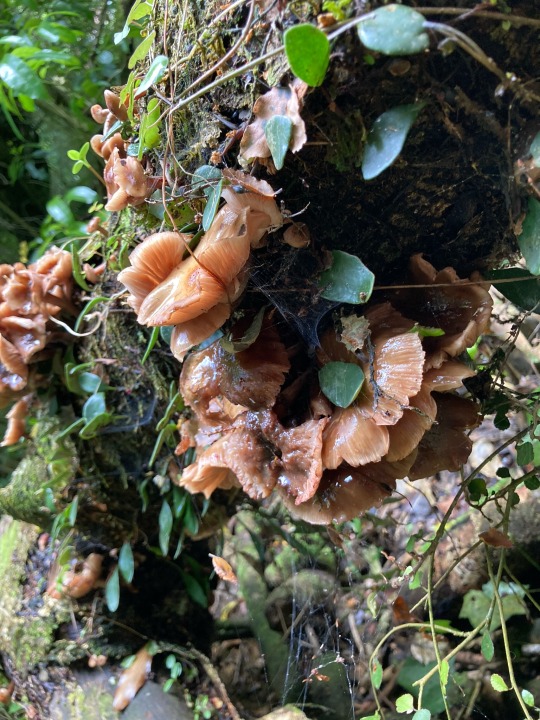
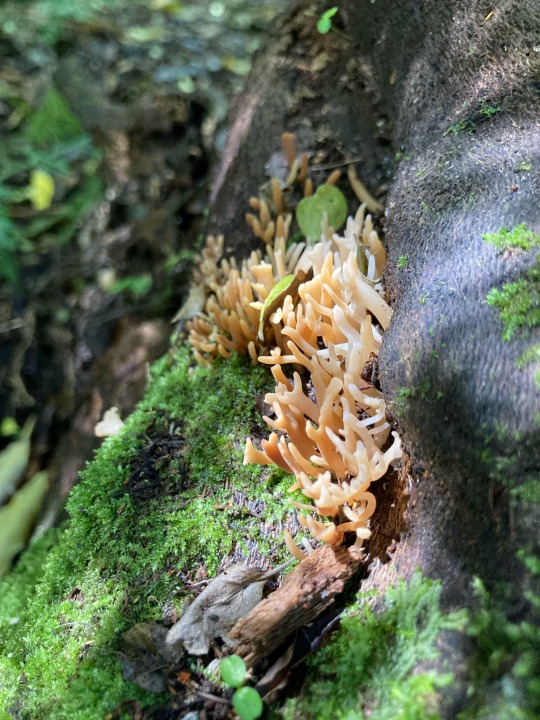


Fungi from today’s walk! It’s FINALLY fungus season again, and now my walks have more meaning.
Harore, Armillaria noveau-zealandia, Honey Mushroom.
Unknown Coral fungus.
19 notes
·
View notes
Text
Watch "Highlight 3:43 – 8:43 from haror live go RAJBANSHIPA" on YouTube
youtube
0 notes
Text
Acne Treatment in Delhi
Dr. Navnit Haror Derma Miracle is one of the best acne treatment Clinic in Delhi. Acne is a skin problem that affects the face, chest, and back of most people during puberty.
1 note
·
View note
Text
0 notes
Text
Best Hair Transplant Clinic in Delhi - Treatment Cost & Surgeon
We At Dr. Navnit Haror’s Hair transplant clinic in Delhi, India offer a variety of hair restoration procedures to help individuals with hair loss or thinning hair. Our clinics offer various hair transplant techniques such as FUE (Follicular Unit Extraction), FUT (Follicular Unit Transplantation), and Bio-FUE, which are all surgical procedures in which hair follicles are extracted from the donor area. All the procedures are done by an expert hair surgeon.

#hairtransplant#hair transportation#hairrestoration#hairline#harlinedesign#dermamiracle#dermaclinic#hairtransplantsurgeon
0 notes
Photo
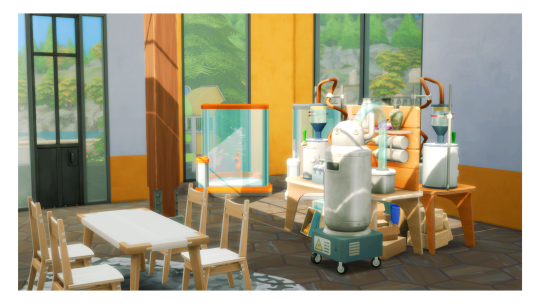

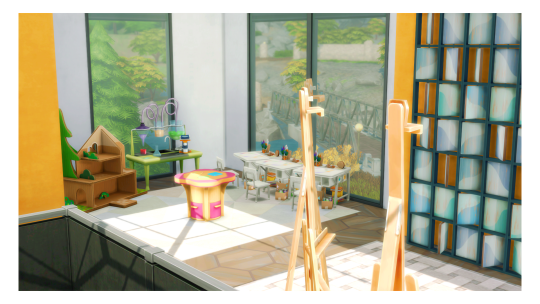



The Waterfront
An old port building now owned by the community, The Waterfront is always the "next" revitalization project, but seems to have a hard time getting the love and attention it deserves.
Origin ID:AandZgame
#ts4#ts4 build#the sims 4#the sims#the sims 4 build#ts4 reno#ts4 renovation#sims 4#ts4 vanilla#my builds#evergreen haror#port promise
19 notes
·
View notes
Note
“Alright… alright… “
Kohga whispered to himself, trying to prepare for the task ahead. His only question was if he would take her back to the clan alive or not. He supposed that would hinge on how much of a fight she put up, if it was reasonable to keep her alive or not.
Surprisingly quiet for his stature, he maneuvered along the beach, inching closer to the Marine Embassy. He moved in until he could hear a voice, where he promptly hid to listen.
- @burly-kohga
“…-And don’t forget that we’re going to be here for a few months, the troops need to feel the land beneath their feet, keeps morale high, just like we need it.”
She seemed to be debriefing the last battalion present.
“Move under the cover of night, and if you need to take a few… people who are a little too curious as to what you’re doing out, that’s fine. They deserve it anyway. If something happens to me, you take orders from Haror. Alright, dismissed.”
She watched as the last of her soldiers left, before taking a breath and stretching.
“Finally, Phew...”
62 notes
·
View notes
Photo






Sag Harbor Bungalow (950 sq ft)
11 notes
·
View notes
Note
Where is more Sonii content we need more Sonii content. Also how do you pronounce her and her wives’ names
I’ll be making more soon I was just thinking of her todayyy aaaaaaa
Sonii is pronounced “Sewn-Yay” (Long o, and the two i’s at the end double up to make that sound)
Haror is pronounced “Hawr-oar” (It rhymes with harbor)
Purah is pronounced “Puu-rah” (This is the way I pronounce it, with a soft long ü)
2 notes
·
View notes
Text
🌒 New Zealand Moons 🌘
As someone who lives in New Zealand in the southern hemisphere, the common names of the moon have never seemed right to me. Because there will be a ‘cold moon’ in summer, and even the moon of my birth month, the ‘wolf moon’, is an animal we don’t have.
I thought it was about time I came up with my own associations. I’ve also added the Māori words (or nearest similar word). So, here they are!
🌕 January: Ocean (Moana) Moon 🌊
🌕 February: Strawberry (Rōpere) Moon 🍓
🌕 March: Harvest (Hauhake) Moon 🌾
🌕 April: Copper (Parahi) Moon 🍂
🌕 May: Mushroom (Harore) Moon 🍄
🌕 June: Rain (Ua) Moon 🌧️
🌕 July: Frost (Hukapapa) Moon ❄️
🌕 August: Magpie (Makipai) Moon ✨
🌕 September: Blossom (Pua) Moon 🌸
🌕 October: Seedling (Mātātupu) Moon 🌱
🌕 November: Life (Mataora) Moon 🥚
🌕 December: Wildflower (Putiputi) Moon 💐
If you’re also in the southern hemisphere, feel free to adopt these or change out the ones that don’t match!
#moon#lunar#lunar witch#witchcraft#full moon#new zealand#aotearoa#southern hemisphere#southern hemisphere witch#kiwi witch#Kyla's Posts
21 notes
·
View notes
Text
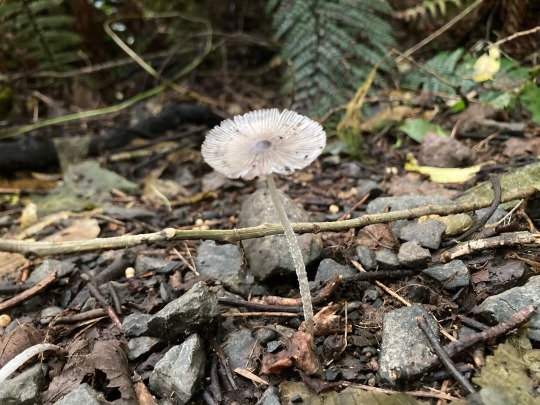
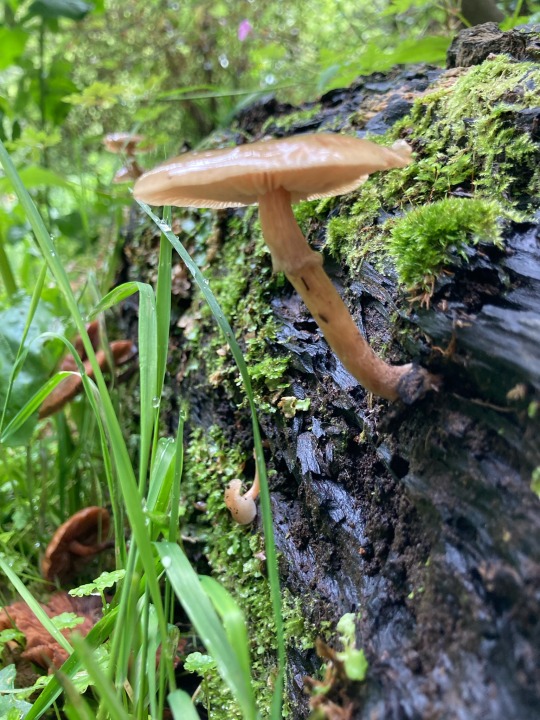

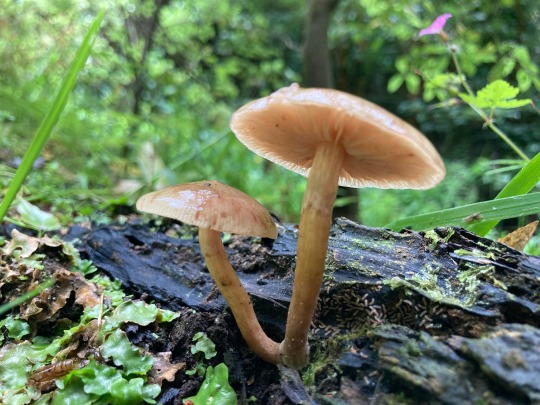
1. Hare’sfoot Inkcap, Coprinopsis lagopus
2-4. Harore, New Zealand honey mushroom, Armillaria novae-zelandiae
3 notes
·
View notes
Text
Watch "Haror ( jadugar biki ji ) বাড়ির সমস্যা সমাধান" on YouTube
youtube
0 notes
Text
Entry Log: #1
Date: 9-15-0002 A.C.
Time: 15:31
Name: Anderson Medellin
Clearance Level: 3
Position: Lead Hardware Specialist
Days in Position: 27
[BEGIN LOG]
I discovered this database today, that allows personnel with acceptable administrative clearance to have access to a program where they can create public or private logs. I haven’t really kept anything like… a diary, I guess is what you’d call it, before. But hell, times have changed rapidly recently, so I might as well follow suit. I’ll use this as a way to… document my experiences and opinions of what’s the haps around here.
I dunno if anyone’s ever gonna find or read these, nor do I know if I really want anyone to, but at this point that’s not on my mind.
It’s been… about a month since I was officially hired by the embassy. And… you know, as weird as everyone is around here, that’s why they’re all charming, in my opinion. I feel less like this is a job or a prison than it is an organization of passionate, expressive, and socially awkward people. Kinda like I am.
Captain Sonii is… well, she’s pretty ruthless. But not in a bad way, no. It’s clear she cares a whole lot about the projects we work on, and the well-being of her crew (being us). And of course not without her quirks, sometimes she lets out what I can only describe as primordial screams of rage when she reads the news and journalism that comes in from Hyrule.
I’m still unsure about the others, but I’m slowly trying to warm up to em’. Sonii’s assistant Haror, who actually was the one who initially interrogated me, is really stoic and focused, but on the contrary comes up with some of the most ridiculously outlandish ideas I’ve ever heard. Both she, and someone who I swear looks exactly like my college professor’s sister, apparently are trying to gain the captain’s romantic interest, and those two fight quite a bit.
Not to mention on a completely different note that I swear there’s an alien living in the vent system.
Finally there’s the guy I was partnered with, the leader of the software specialists. He’s… he was hard to communicate with at first. Still is, but it’s getting easier. Find it odd how he doesn’t talk to me- or anyone, far as I’ve seen. Friendly guy though. Waves hello, smiles a lot, writes his emails like a pro and sounds real sweet in em’ too. I gotta do my best to find out more about him, after all we’re gonna be working together a lot, and hell, maybe we’ll become friends. Who knows.
[END LOG]
2 notes
·
View notes
Text
The Black Meat
The Māori have nearly two hundred names for mushrooms endemic to New Zealand, but as of 2005 most of the traditional knowledge of this fungi has been disrupted. The primary vehicle of ethnomycological knowledge, as we have seen in other explorations form this project in Asia and Latin America, is through oral tradition. In the case of the Māori, these links have been eroded. It should be noted, however, that the ‘kingdom of fungi’ as a class of entities was not recognized by the Māori until recently. This could mean that those researchers that are attempting to uncover traditional knowledge about fungi are asking the wrong questions.
The term ‘Harore’ is the modern generic name for fungi. It was and is considered a ‘starvation food’ or at the very best, not considered a delicacy but just another part of the edible landscape of New Zealand. Other uses are as tinder and fire-carrying materia — a usage that we see in paleomycological investigations that has survived to the present day. One would be forgiven for thinking of brackets and other fire-carrying mushrooms as kin to Prometheus and all that hero represents. One of the most significant usages of fungi, however, is absolutely sacred. Cordyceps robertsii, a predatory mushroom that preys on local caterpillars, is used (along with the caterpillar) to create the pigment for Tā moko (traditional Māori tattoos). (Fuller et al, 402).
Another fungi commonly used by Māori today are the Laetiporus portentosus, known as ‘Te pūtawa’ in Te reo (‘the language’ in Māori), which is used to protect wounds from infection by using it as a type of antibiotic pad.
Pekepekekiore, or Hericium coralloides, is one of the few where still extant oral tradition refers to the ancestors of modern Māori using it as a forest food.
New Zealand forests also contain the Wood Ear fungus known as Auricular cornea or ‘Hakeke’ in Te reo. While prized in some parts of the world, Hakeke is almost certainly a starvation food for the Māori, even being featured in a song captured by the colonialist Sir George Grey in 1853:
“What, what shall we eat?
Wood ear fungus
that clings to the karaka
or, convolvulus
that stretches over the land?
Who will dig the convolvulus
in the winter?”
Because it does suit the taste of New Zealand’s Asian neighbors, it is the only fungus that is wild crafted and exported. This practice is not modern, however, the ancestors of contemporary Māori having established trade with China in the fungi in the 19th century.
Agrocybe parasitica, known to the Maori as Tawaka, is a food, medicine, and magical agent. It is given to individuals to reduce fever and for the general health of expectant mothers. It can be used (either intentionally or otherwise) as a malefic agent as well. It is reported that if an individual consumes Tawaka and walks among gardens growing gourd plants that the gourds will decay or otherwise not mature. Similarly, an individual who has consumed the mushroom will reduce other’s chances to catch fish.
The ubiquitous Puffball (Lycoperdon utriforme), called Pukurau in Te rea, is used medicinally in much the same way as it is the world over — as a successful agent utilized to stop bleeding from wounds and for reducing pain from burns. The prevalence of puffballs on nearly every continent and the fact that it is used in identical or similar ways by indigenous communities all over the globe is strong evidence that the Puffball has been humankind’s ally since some point deep in prehistory. The town of Waipukurau in Central Hawkes Bay, New Zealand is reportedly named after a strong colony of Puffballs. This area is also central to Māori culture, in particular the Rangitāne tribe (Whenua et al, retrieved from https://www.sciencelearn.org.nz/image_maps/72-matauranga-maori-fungi-as-food-and-medicine).
Let’s return for a moment to Awheto, the Cordyceps mushroom that grows from the caterpillars of two specific moths in Aotearoa. The caterpillar carcass and mushroom are collected and fired into charcoal and pulverized into a black powder, which is then used in the production of sacred tribal tatooes. This connection between insects and mushrooms is important for our current investigation as it will open up doors to different facets of our archetype.
In 1952, the entomologist David Miller published a paper in the Journal of Polynesian Studies titled ‘The Insect People of the Maori.’ In this work the author captures the genealogy of Māori gods and spirit-forms that make up the foundation of their cosmogony includes all living things except humans and is known as the Te Whanua a Torohuka. Part of the Te Whanua a Torohuka are the Aitanga Pepeke, or the Insect People. The tribe of Aitanga Pepeke properly consists of spiders, mites, sand-hoppers, sandlike, crayfish, shrimp, crabs, woodlice, slugs, snails, worms, millipedes, and centipedes (Miller, 2). Miller separates the Māori spirit genealogy into 5 branches. The first four have a very similar structure to Greek or Roman genealogies, which should be familiar to many readers. The fifth, begun by a spirit-form named Haumia — the Lord of Uncultivated Foods, stands alone as its own branch, unconnected to the rest. The Insect People are direct descendants of Haumia through his descendent, Te Monehu — the Patron of Fern-Root. Also among this taxonomy are beings with extra-normal origins that are of broader interest to our investigation. These are Putehue, who begat the Gourd-Plant. The Gourd-Plant having origins outside of the traditional spirit ecosystem and being weak against the sympathetic presence of the Poplar Mushroom is a potentially valuable data point. A celestial being named Nuhe begat the Sphinx Moth Caterpillar — one of the two endemic creatures specifically targeted by Cordyceps robertsii and ultimately ending as materia for sacred Māori tattoos (the Ghost Moth caterpillar being the other). Flies and cicadas also are considered to have a lineage from outside those that rule over Aotearoa (Miller, 4). This causes one to wonder if these classifications indicate a type of invasion of a non-indigenous species at some point in deep time.
Alternate, or perhaps more specific, origins of the tribe of Aitanga Pepeke are also recorded by Miller. A descendent of the Lord of the Ocean, Punga, begat Tutewanawana who in turn begat Tutangatakino — a singular evil diety and Lord of the Human Stomach and all of the pains originating from that area of our anatomy. Tutangatakino’s decedents are recorded as vermin (which were largely introduced by colonizers), insects (in general), spiders, lizards, and centipedes. Their lineage stemming from a recognized evil marks them as malefic entities in the Māori spirit-ecology (Miller, 5).
Towards the conclusion of Miller’s paper is a glossary of terms that will be of great assistance to us in our investigation. The specific spirit form we are investigating is the Pekepekekiore, a mushroom that goes by the common English name of Coral Tooth Fungi and the scientific classification of Hericium coralloides. The term Pekepekekiore isn’t specifically defined in any of the references that mention it, but Miller’s glossary contains names with the same phonemes.
Pekepeke Haratua is the Māori name for Macromastix holochlora — commonly known as Daddy Long Legs. It is the only term in the glossary that contains a reduplication of the phoneme ‘peke.’ Pekeriki is the name for both lice and invasive vermin. Peketua is the name of the centipede, who is referred to in the glossary as the progenitor of all other insects, lizards, and spiders (Miller, 55). Pete also means ‘to jump,’ and is the word to describe arms and legs. The reduplication 'as in pekepeke' is a common feature in some indigenous languages to describe 'more then one.' Kiore can be used to describe a mouse, a later usage as mice and rats came with colonization. It also has notes that are relevant to hanging or climbing, which relates back to the first two phonemes if they are to be interpreted as 'limbs.' The ‘Many-Legged One’ is a possibly very good interpretation of the Māori name for the Coral Tooth Fungus when attempting a direct translation of its name and considering its connections centipedes endemic to New Zealand like the Cormocephalus rubriceps — which can grow up to a massive 10 inches in length.
The Many-Legged One is often found on decaying beech and in beech ecosystems, tying him (as so many other mushrooms are) to the Gallo-Roman/Proto-Basque/Celtic deity Fagus — who rules over the beech, red-haired humans, and child birth. Hericium coralloides has been proven to grow on freshly cut beech logs, decaying beech (in the wild), and even on living beech (with assistance). The mycelia of Coral Tooth Fungi has also been observed as being more ‘combative’ in the wild then many other types of mushroom mycelia (Crockatt, 9) — loaning it an aggressive and fiery ambience as an archetype. In the Northern Hemisphere, H. coralloides typically fruits in its chosen beech ecosystems from early September to late November, depending on the severity and quickness of the coming winter. On occasion, The Many-Legged One is also found on ash trees, on occassion. His affinity for beech extends into the Upside-Down as well, being found primarily on Southern Beech in New Zealand, for example.
One primary method of cultivating this spirit-form is through the use of colonized oak dowels and freshly cut beech logs. It is recommended that an electric drill and a bit sterilized with alcohol spirits create a series of staggered hole 1/3 in in diameter, and approximately 1 in deep. Colonized oak dowels can then be hammered into the beech. This method has also been proven to work (albeit somewhat less consistent then when using cut beech) on living beech trees. If colonization of a living beech is successful, however, the resulting growth has been reported to be prolific (Crockatt, 78). Spores of Hericium corraloides can remain viable for up to 24-30 weeks (Crockatt, 80). Cultures of Hericium corraloides spores have been observed to grow the best on Sabouraud Dextrose Agar (Julian et al, Abstract).
Hericium coralloides shares many of the nutraceutical effects of its kin, Hericium erinaceus. The Many-Legged One, however, has unique metabolites that achieve these effects. These metabolites have been shown to follow different metabolic pathways as well, marking Coral Tooth Fungi as a powerful synergistic supplement to H. erinaceus. These corallocin metabolites include an isoindolinone derivative (a six-membered benzene ring fused to a five-membered nitrogen-containing ring that is quite complex and rare from natural sources) that has demonstrated nerve growth and neurotrophic (molecules that support the growth, survival, and diversity of neurons) activity. Corallocin B has also shown to have antiproliferative effects on cancer cells and the ability to regulate endothelial function, which has implications for those suffering from coronary artery disease, diabetes, hypertension, and hypercholesterolemia (Wittstein et al, 1).
Pekepekekiore, the child of Peketua — the giant New Zealand centipede, through the mechanisms of its corallocin metabolites is a potent neurotrophic agent and can be connected to The Black Meat, a drug described by William S. Burroughs in Naked Lunch. In that work we are first introduced to The Sailor, a Meat Eater, as he interacts with a shoe shine boy in the sprawling Interzone. The Sailor is described as having cold eyes the color of depths of the sea that reflect an imminently foreign perspective to the warm-blooded shoe shine boy’s relationship with the world. The Sailor can be imagined as the descendent of Tutangatakino, the evil entity ultimately descended from the Lord of the Ocean. He exists in an ficto-ecological niche with other insectoids like ‘Fats’ Terminal, an employee of the infamous ‘Meet Cafe’ who is described as possessing blank periscopic eyes (Burroughs, 51). This is another of Tatangatakino’s children for he begat all members of the Insect People of Māori, the Aitanga Pepeke Tribe. This niche of spirit-forms, the Insect Tribe, can be assumed to imbricate over the magical niche of the Kingdom of Fungi through non-western taxonomies that see no boundaries to combining lizards, moths, centipedes, and fungi into the same genealogical group.
Further into the chapter of Naked Lunch entitled ‘The Black Meat,’ we follow The Sailor, our embodiment of the Meat Eater. He is described as manipulating a leaden tube with fibrous pink fingers reminiscent of the Pinking Things from Lovecraft’s Whisperer in the Dark. The Sailor cuts the end of this tube with a little curved knife — an archetypal tool of the mushroom forager — and a mist taking on the rolling image of boiling fur flows into his face, distorting and pulling it out of phase, only to bring it back into ‘unbearable focus’ a moment later (Burroughs, 52-53). This capture the metaphorical experience of the nerve growth and synaptic sharpening provided by Coral Tooth Fungus’ primary nutraceuticals.
The ‘Traffickers in the Black Meat’ are described as youths dressed as women in gowns of burlap and rotten rags. This connects Hericium corraloides with the origins of drag in deeptime — from Two Spirit individuals in American Indian/Native American culture to the Roman literature and Chinese theater. As spirit form, our mycospirit is a patron of the LGBTQ community. The materia of their gowns are representative of poverty. This is a multi-faceted concept; poverty of spirit, poverty of time, poverty of food choices and nutrition, a poverty of social power, and a poverty of wealth. The ‘dealers,’ which we can also assume to be a representation of the beech ecosystems so beloved by the Coral Tooth fungi and many others in the Kingdom, are said to appear as crustaceans camouflaged against black rocks and among shining lagoons the color of muddy rivers (Burroughs, 52). Old Bill Lee represents the Meat Eaters and their dealers as a type of tribe, a tribe whose role is the consumption of the children of Haumia, the Māori Lord of Uncultivated Food — a natural deity to pray to when foraging for rare mushrooms like The Many-Legged One. It is in the reflection of the this chapter of Naked Lunch that we can see smoky glimpses of Anna Tsing’s matsutake hunters in the Pacific Northwest. The dealers and the hunters existing in a synergistic cosmic waltz.
The clan of the Eaters of the Black Meat, a subset of the larger (and growing) tribe of the mycomage, are painted as the ‘black marketeers of World War III.’ We are traffickers in the subversion of materialist values. The Third World War is one of culture — the re-enchanted versus the media-fed undead. We are the ‘servers of fragmentary warrants’ constructed of asemic writing. We, the 21st century magic-user, are serving warrants to the materialists, the Dream Police (who would keep us from realizing our lives outside of their multifaceted prisons of poverty), for their crimes against the spirit world. We all live in Burroughs’ unconstituted police states — living in a state of oppression without realizing. We take in The Black Meat and our bodies react to these ancient spirits, to their medicine. We react in ways the Dream Police never intended and fear the most. The mycomage is hand-in-hand with the dealers of the Black Meat. We are the brokers of unregulated dreaming and the travelers on the paths of retrocausative enchantment and Lovecraftian hypernostalgia. As we advance on our enemy:
“The Dream Police disintegrate in globs of rotten ectoplasm swept away by an old junky, coughing and spitting in the sick morning.” (Burroughs, 55)
as we consume the ‘overpoweringly delicious’ flesh of the Many-Legged One (reported to taste of the camouflaged crustaceans revealed in Burroughs’ narrative) we become like him and the divine centipedes that spawned him. Tutangatakino is kin to Ōmukade, a Japanese Yōkai. Yōkai is a term used to describe spirits that is represented by an ideogram that combines the terms ‘bewitching,’ ‘attractive,’ and ‘spectre.’ Another, perhaps more familiar, term for yōkai is mononoke. Ōmukade is a giant centipede that resides in the mountains and eats humans, yet is reportedly weakened by human saliva. Sepa is the Centipede God of the Egyptians whose cult was centralized in the area surrounding Kheraha, north of Memphis. This is now known as Old Cairo, as an embodiment of Interzone we are ever likely to see in-the-real.
Sepa the Centipede God is the adversary of Apophis the Serpent and Lord of Disorder. In this ancient juxtaposition we can see the role of the Many-Legged One’s medicine where it can heal or stem the tide of neurodegenerative diseases — staving off the disorder that is visited upon humankind when ravaged by those diseases. Rituals or spells directed against disorder or chaos (especially when traveling) or the other spheres of influence ruled by Apophis can begin with the invocation:
“He is Sepa — he is on his way to Heliopolis…” (retrieved from https://henadology.wordpress.com/theology/netjeru/sepa/)
The ‘Road to Sepa’ is a spiritual path that centers on the worship and patronage of the Great Centipede and is synonymous to the Clan of the Eaters of the Black Meat.
The Maya had an entire era dedicated to the centipede, the Waka Dynasty that spanned from the fourth to the eight century AD. Curiously, the Snake/Centipede - Apophis/Sepa dynamic is present here as well with the first queen of the Waka Dynasty being known as ‘Lady Snake Lord’ (retrieved from https://www.nationalgeographic.com/news/2017/09/ancient-maya-king-tomb-spd/). Much like the Māori, the Mayan had an evil entity known to scholars only as God A’ or ‘Akan’ that ruled over the realm of the dead and alcohol; he is often depicted as a flying demonic insect in a state of self-decapitation and has in his entourage the centipede, spiders, and all the same members of the
Aitanga Pepeke that were begat by Tutangatakino.
The 1901 treatise on Māori Magic by the ethnographer Elsdon Best states that the ancestral Māori had three primary causes of death; death on the battlefield, death from sickness, and death from witchcraft. Māori witchcraft is not only an active malefic force between a sorcerer and a victim (or another sorcerer) but can also be what is described as ‘semi-passive’ or ‘semi-active’ magic — that which is only dangerous when it is interfered with (Best, 69). This includes spirits of place, enchanted places, or magically-imbued natural entities that use magic as a type of natural defense mechanism. This could easily include fungi or, at the very least, protected trees inhabited by fungi.
Another class of Māori magic is what is called ‘makutu,’ which translates to the Western concept of witchcraft. Makutu is reported to be a non-aggressive or defensive practice that includes spells to protect the life, spirit, and health of the practitioner. If we were to imbricate mycomancy onto the Māori system, it would certainly imbricate over the practice of makutu. Counter-spells are also present and are considered a varietal of makutu. Counter-spells are wards that nullify the effects of aggressive magic — three generic terms for this practice are momono, parepare, and whakataha (Best, 69). The author of ‘Māori Magic’ also dives into the origin stories surrounding how magic came to the Māori. According to the paper there is an archetypal magician by the name of Te Mahoi-hoi, a direct descendent of Maui whose children lived among the Māori. The term mahoi directly translates to the Western concept of spirit or rather, the essence of a human or god’s soul. Te-Mahoi-hoi begat the ‘little people’ of Aotearoa, whom are called the Te Tini-o-te-mahoihoi by the author. These are roughly equivalent to the elves and fairies of European tradition (Best, 71).
Māori magic in its passive and aggressive distinctions, are recorded as being associated with direction and gender. Tama-tane, aggressive magic, is affiliated with the East and the male gender while Tama-wahine, passive magic, is of the West and aligned with the feminine. Tama-wahine is reported as the more powerful form. In this, we are also aligned with mycomancy, which, as has been previously discussed in this investigation, is a feminine magic and the spirito-medicinal properties of the mushroom archetypes form this system are ultimately passive and defensive in nature. Tama-wahine is used primarily to protect oneself and those places that serve and are productive for the individual. Magic is used to protect a forest or a productive tree through the use of charms, invocations, or other magic meant to conceal the wealth or value of these places (Best, 76). Using this same metaphysics, a mushroom can easily be used to protect the tree from which it sprung or the entire forest that houses the foodsource. This use of natural materia as a component of sympathetic magic to protect the natural environment is intuitively extremely powerful.
If one’s land is attacked or afflicted, we are offered a specific rite that can be adapted to the purposes of the mycomage. Take for example a situation where a particular tree or grove is very productive in terms of producing mushrooms. Perhaps this is a secret morel patch deep in the woods. You find that someone else has found your patch and poached your morels or you are the victim of aggressive magic that has reduced the productivity of this food source for you. ‘Māori Magic’ recounts a spell that can be used to ‘destroy the enemy wizard.’
For our purposes, begin with a mushroom from the place you wish to protect. The mage is to use a wand, what type is not divulged, and tap the ‘body’ of the forest (the mushroom) and recites the following:
”To ara
Haere i tua, haere i waho
Haere te maramatanga
Haere i nga kaupua o te rangi
Haere i nga kapua o te rangi
Haere ma hihi ora
Ki te whai ao, ki te ao marama
Ko rou ora
Haere i a maona nui
Haere i a moana roa
Haere i a maona te takiritia
Ki te whai ao, ki te ao marama
Ko rou ora”
The mycomage then sprinkles water on the body of the place and places it with a meal in an oven at dawn. Once the food is cooked, the mage checks the ‘forest body’ and if it too has been cooked through the poacher or enemy magic-user is considered defeated (Best, 78). Protecting crops, fish, and forest products through the use of magic is a widespread practice, a near universal custom of the Māori, according to the paper. Another method of protective magic is to erect a post and tie local ferns, weeds, and other local materials to it. One piece of this materia is special and is referred to as the ‘whatu,’ or ‘kernel,’ which absorbs magical power directed at the place (Best, 90). This could be coupled with the rite of mātapuru which consists of tying green flax around the body, arms, and legs and reciting the mātapuru momono (incantation):
“Monokia te waha o te tipua
Monokia te waha o te tahito
Me puru to waha ki pari a nuku
Me puru to waha ki pari a rangi
E ki mai na koe, he tahito koe
He koeke, he kai-ure” (Best, 95-96)
The sigil of the Many-Legged One… the Coral Tooth Fungus… the Black Meat is to be invoked for any individual seeking to grow beyond their current intellectual capacity. This can be in conjunction to studying towards a degree or even attempting to gain access to higher education from a lower socio-economic strata. He is in opposition to the snake as an archetype of evil, and thus, can be used when contacting Lucifer/Satan/The Devil as a talisman of protection.
Pekepekekiore is a friend of the forest ecosystem and if found in the wild, along with its sigil, can be used in protective rituals as the metaphorical spirit of place. Plagues of insects are rendered powerless in the face of this spirit-form. The magico-medicinal metabolites of Hericium coralloides are proven as effective agents in stemming the blinding storm that is cognitive decline, diabetes, and metabolic syndrome. Its sigil along with modified Osirian rites, the Māori spells listed above, or any similar magical practices will enhance its already powerful effects.
Sigil courtesy of Ghostly Harmless’ Sigilizer
References
Best E (1901) Maori Magic: Notes upon Witchcraft, Magic Rites, and Various Superstitions as practised or believed in by the Old-Time Maori. Auckland Institue. 69-99
Burroughs W S (1959) Naked Lunch. (First Evergreen Black Cat Edition, 6th Printing) Grove Press, Inc. New York, NY.
Crockatt M (2008) Ecology of the rare oak polypore Piptoporus queyrcinus and the tooth fungi Hericium cirrhatum, H. coralloides, and H. erinaceus in the UK. Cardiff University. pp 1-129
Fuller, R, Buchanan P and Roberts M (2005) Medicinal uses of fungi by New Zealand Maori people. International Journal of Medicinal Mushrooms (7) pp 1
Julian A V, Wright C A, and Reyes R G (2018) Prelude to successful cultivation of Hericium in the Phillippines: Understanding its mycelial growth response on different culture media and its antibacterial activity. International Journal of Pharmaceutical Research and Allied Sciences (7,2) pp 1-7
Miller D (1952) The insect people of the Maori. The Journal of the Polynesian Society (61, 1) pp 1-61
Whenua M, Stewart G, and Buchanan P (2020) Mātauranga Māori: Fungi as food and medicine. Retrieved from https://www.sciencelearn.org.nz/image_maps/72-matauranga-maori-fungi-as-food-and-medicine
Wittstein K, Rascher M, Rupcic Z, Lowen E, Winter B, Koster R W, and Stadler M (2016) Journal of Natural Products. pp 1-6
Mushroom Images
Agrocybe parasitica from Ian Dodd
Auricular cornea from ucera
Cordyceps robertsii from Richard Hartland
Hericium coralloides from Lisa Kimmerling and Alan Rockefeller
Laetiporus portentosus from Ian Dodd
Lycoperdon utriforme from Thomas Laxton
5 notes
·
View notes